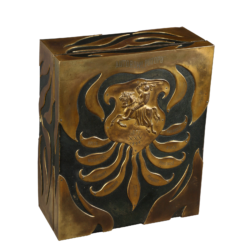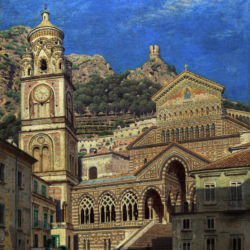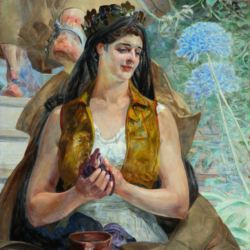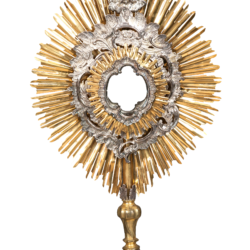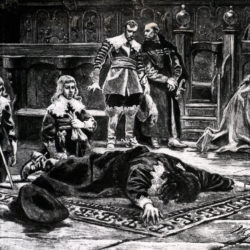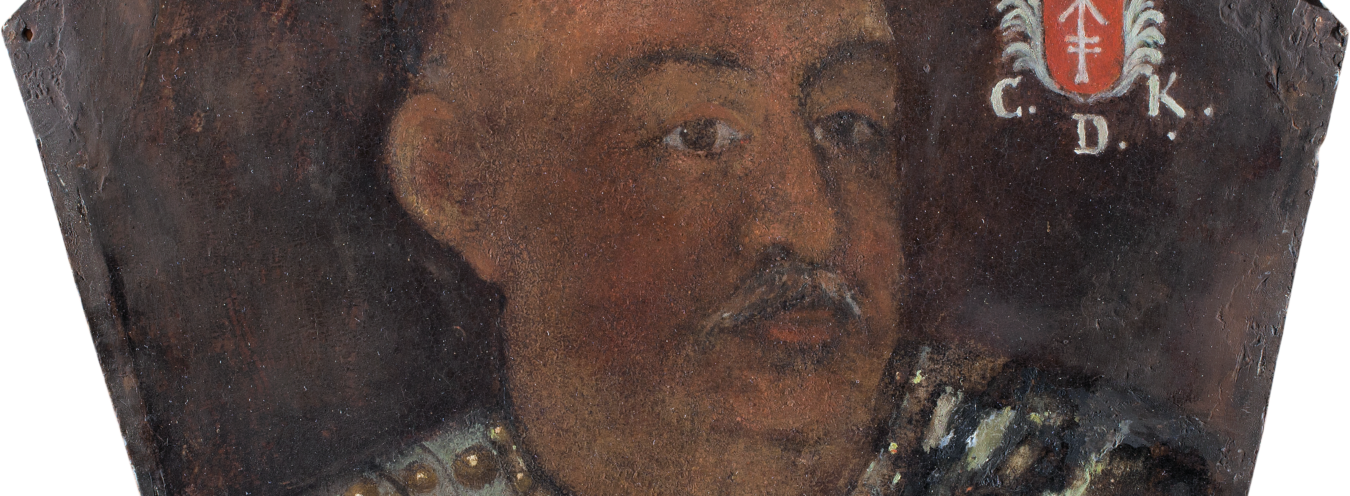
The legacy of the Polish-Lithuanian Commonwealth
It is then an interesting issue how in the time of depoliticization it was possible for Sienkiewicz to maintain this pre-modern belief, consistently until his death, regardless of his Polish positivist and democratic formation. It would seem that Sienkiewicz was a spiritual heir of the Polish-Lithuanian Commonwealth, its legal and political ideas in a much greater part than was previously thought. Such mystical power and irremovable quality of the political and community ideas forged in past culture were the focus of Dariusz Cezary Maleszyński. Their subtle presence and immortality in modern culture stems from the existence of a certain supraindividual, archetypal formal-structural order, and it may well possess a metaphysical sanction which the researcher calls The Great Anthropological Chain. In this chain, Maleszyński discerns three great motifs perpetuated and re-returning in literary topoi: human being, community, existence.[1] Among these literary topoi, Sienkiewicz valued the comparison of the state to a ship, a sinking boat, as is proven by Legenda żeglarska (A sailor’s legend, 1890) – an allegorical tale of the might and fall of Poland in which the author includes allusions to the Polish national anthem.[2] This allegory is also to be found in The Deluge:
The whole country was like a ship already deep in the abyss, and that cloister was peering up like the top of a mast through the waves. Could those wrecked ones, clinging to the mast, think not merely of saving themselves, but of raising that vessel from under the ocean?
According to man’s calculations, they could not.[3]
Among many images of an immortal community one of the most beautiful ones is featured in Jeszcze Polska nie umarła (Poland Is Not Yet Lost, the title of the first version of the song which is now the Polish national anthem – K. C.) which captures the moment of the transfer of the mystical body of the king idea onto the entire collective which attains sanctification now in the nineteen-century effort leading to the reclaiming of the country through common sacrifice and action, whether in Polish positivist organic work or in the armed combat of romanticism. The 19th century constitutes a purgatorial age of the transformation of the idea of the Polish state from monarchic to democratic-organic:
Passing in exclusivity onto the nation the eternal element of the Polish nature, the unaware making it a successor of the authority of the Kingdom took place on November 25, 1795, when at the demand of the Russian court Stanisław August [Stanisław II Augustus] signed his own abdication. The Sejm ceased to exist, the monarch returned his crown – the sovereign rights of the Commonwealth could then be represented by the nation itself. Elsewhere at the time – as Roger Callois says – “out of the blood of the ruler the nations divine status originated,” in Poland – it originated from the abdication. The orphaned Poles could speak of themselves as in the interregnum of 1572 the gentry spoke of themselves: “upon this time we all together […] are kings.”[4]
Sienkiewicz turned out to be the strongest literary catalyst of this transformation in the 19th century, he enabled villagers and townspeople to become Poles and gentry as a separate state passed on into the tradition of the past and turned into citizens, Polish positivists and proponents of organic work, modern national patriots.
The Whirlpools written in 1910 is not just a wise, prophetic novel about the reverie of socialism showing the roots of future Bolshevist totalitarianism, it is also a Polish positivist novel with a thesis where the protagonist, a female villager, wronged in the past by Krzycki, a member of the gentry, returns after years spent abroad as a refined lady, is supposed to represent a civic and cultural social model in the reborn Poland. An astute insight into the character was written by one of the most interesting literary critics of the 20th century, Adam Grzymała-Siedlecki:
Out of Hanka Anney that pure soul, burning and male – this is our desire for the man of the age, when the peasant becomes the citizen and the defender of Polish nature, when every single peasant is made aware, and the best of them shall create themselves to be such gentry, such knights, as knightly and noble miss Anney is, Hanka from the Radom countryside.
Hanka Anney is the artistic nobilitation of the Polish peasant.
If anyone today has the privilege of nobilitating, it is no one other than.[…]
In this desire for a peasant-knight there simultaneously is, there should be, Sienkiewicz’s happiness that his books have offered the peasant soul the first lift towards that height.[5]
In the novel, which was slandered as reactive, Sienkiewicz fully identifies with the national-democratic program formed in 1886 by the editorial team of Głos. Little wonder then that Sienkiewicz was regarded by people around the world as the creator of modern Poland. As he was dying in 1916 right after the Act of 5th November, which had the symbolic significance in the international process of acknowledging Poland as a separate state entity; in Czech journals the tragic pathos of this situation was highlighted as – the way they phrased it – when a truly old and renowned kingdom rises back into life, one of the greatest and most deserving people to wake it out of its slumber succumbs to death.[6]
The Trilogy of Sienkiewicz proves the strong relation of the writer with the legacy of the Polish-Lithuanian Commonwealth and Polish romanticism. The cycle is, however, already permeated with the idea of a modern national state which is heading not towards monoethnicity but rather an organic, mystical unity which might encompass all the previous minorities and faiths of the Commonwealth as long as they remain true to the Republic and its values to which, if necessary, they would be equally willing to sacrifice blood in the name of the idea of the immortal community rooted in God.
Przypisy
- D. C. Maleszyński, “ ‘Trzy światy’ piśmiennictwa staropolskiego a zadania interpretacyjne tematologii” [Three worlds of old Polish writing and the interpretative tasks of thematology], in Człowiek w tekście. Formy istnienia według literatury staropolskiej [Humans in text: Forms of existence in old Polish literature], Poznań 2002, pp. 206–207.
- D. C. Maleszyński, “Alegorie Rzeczypospolitej w literaturze polskiej XVI-XVIII wieku” [Allegories of the Polish state in literature, 16th-18th century], op cit., pp. 149–169.
- The Deluge, vol. 2, ch. 2, p. 268; trans. Jeremiah Curtin, emphasis M. G
- D. C. Maleszyński, „Idea nieśmiertelnej wspólnoty w pieśni ‘Jeszcze Polska nie umarła’” [The idea of the eternal community in Poland Is Not Yet Lost], op cit., p. 194; trans. K. C.
- A. Grzymała-Siedlecki, “Panna Anney,” Gazeta Warszawska 1910, no. 197 (July 21), p. 2.
- Hlasnároda 1916, no. 319 (November 17), pp. 2–3; More on the theme of the Sienkiewicz cult in the Czech Republic see M. Gloger, “Sienkiewicz i Masaryk. O kulcie autora “Quo Vadis” w Czechach” [Sienkiewicz and Masaryk: On Sienkiewicz’s cult in the Czech Republic], in Sienkiewicz polityczny. Sienkiewicz ideologiczny [Political Sienkiewicz. Ideological Sienkiewicz].

